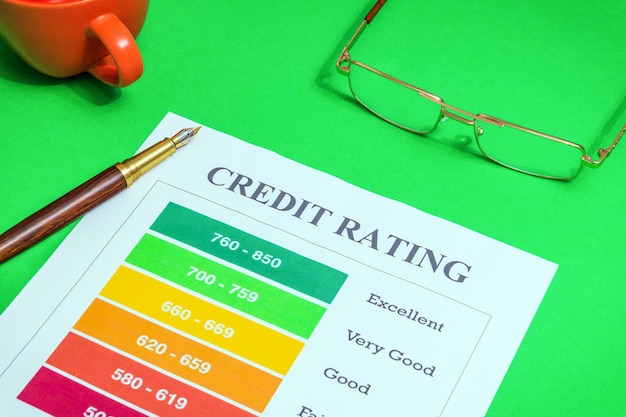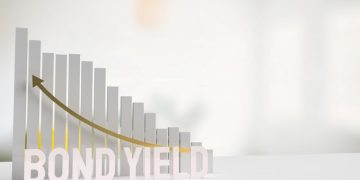Investing in Bonds: Yield Curves & Interest Rate Risk in 2025

Investing in bonds in 2025 requires understanding yield curves and interest rate risk, as these factors significantly impact bond values and investment strategies in a fluctuating economic environment.
Navigating the world of investing in bonds: understanding yield curves and interest rate risk in 2025 requires a keen understanding of the forces that shape fixed-income markets. As economic landscapes evolve, grasping these concepts is crucial for making informed investment decisions and maximizing potential returns. Let’s delve into the key factors that will influence bond investments in the coming year.
Understanding the Basics of Bond Investing
Bond investing forms a cornerstone of many diversified portfolios, offering a relatively stable income stream compared to more volatile asset classes. To effectively navigate the bond market, it’s essential to grasp the fundamental concepts that underpin bond valuation and performance.
What is a Bond?
A bond is essentially a loan made by an investor to a borrower, which could be a corporation, municipality, or government. In exchange for the loan, the borrower promises to pay a specified interest rate (coupon rate) over a set period and repay the principal (face value) at maturity.
Key Bond Characteristics
Several key characteristics define a bond, including its coupon rate, maturity date, and credit rating. The coupon rate determines the periodic interest payments, while the maturity date indicates when the principal will be repaid. Credit ratings, assigned by agencies like Moody’s and Standard & Poor’s, assess the borrower’s creditworthiness and risk of default.
- Coupon Rate: The annual interest rate paid on the bond’s face value.
- Maturity Date: The date on which the principal amount of the bond is repaid.
- Credit Rating: An assessment of the issuer’s ability to meet its financial obligations.
Understanding these basics is crucial for anyone looking to invest in bonds. These factors collectively influence a bond’s price and its attractiveness as an investment.
In summary, bond investing entails lending money to entities in exchange for predetermined interest payments and the eventual return of the principal. By understanding key characteristics such as coupon rate, maturity date, and credit rating, investors can begin to evaluate the risks and rewards associated with different types of bonds.
Decoding Yield Curves: What They Tell Us for 2025
Yield curves are graphical representations of bond yields across a range of maturities. These curves provide a snapshot of investor expectations regarding future interest rates and economic growth, making them a valuable tool for bond investors.
Types of Yield Curves
The most common types of yield curves are normal, inverted, and flat. A normal yield curve slopes upward, indicating that longer-term bonds offer higher yields than shorter-term bonds. An inverted yield curve slopes downward, suggesting that short-term bonds have higher yields, often a sign of an impending recession. A flat yield curve indicates similar yields across all maturities, reflecting uncertainty in the economic outlook.
Interpreting Yield Curve Shapes
The shape of the yield curve can signal potential shifts in economic conditions. For example, an increasingly steepening yield curve might suggest expectations of higher inflation and economic growth. Conversely, a flattening or inverting yield curve often precedes economic slowdowns or recessions.
- Normal Yield Curve: Indicates economic expansion and stable inflation.
- Inverted Yield Curve: Often signals an upcoming recession.
- Flat Yield Curve: Reflects uncertainty and potential economic transition.
For 2025, monitoring the yield curve will be particularly important. Its shape can provide insights into the Federal Reserve’s policy decisions and the overall health of the U.S. economy.
In essence, yield curves serve as barometers of economic expectations, offering valuable insights for bond investors. Understanding the different types of yield curves and their implications can aid in making more informed investment decisions in 2025 and beyond.

Interest Rate Risk: Understanding the Exposure in Bond Investing
Interest rate risk is a primary concern for bond investors. It refers to the potential for bond prices to decline as interest rates rise. This inverse relationship is a critical aspect of bond investing that requires careful consideration.
How Interest Rate Changes Affect Bond Prices
When interest rates rise, newly issued bonds offer higher yields to attract investors. As a result, existing bonds with lower coupon rates become less attractive, causing their prices to fall. The longer the maturity of a bond, the more sensitive it is to interest rate changes.
Duration as a Measure of Interest Rate Sensitivity
Duration is a measure of a bond’s sensitivity to interest rate changes. It estimates the percentage change in a bond’s price for a 1% change in interest rates. Bonds with higher durations are more volatile and susceptible to price fluctuations due to interest rate movements.
Bonds are subject to interest rate risk, where rising rates can decrease bond prices. Duration measures the sensitivity of a bond’s price to interest rate changes.
- Rising Interest Rates: Cause bond prices to fall, especially for long-term bonds.
- Duration: A key metric for assessing interest rate sensitivity.
- Longer Maturity Bonds: Generally have higher durations and are more sensitive to interest rate risk.
In 2025, with potential shifts in monetary policy and economic conditions, understanding and managing interest rate risk will be vital for bond investors.
In summary, interest rate risk poses a continuous threat to bond investments, and its impact is intricately linked to bond maturity and duration. Investors need to assess and manage this risk to protect their portfolios, especially in an environment where interest rates are subject to change.
Strategies to Mitigate Interest Rate Risk
Given the inherent interest rate risk in bond investing, employing strategies to mitigate this risk can help protect your portfolio from potential losses. Several approaches can be used to manage interest rate sensitivity and enhance investment stability.
Laddering Bond Maturities
Bond laddering involves purchasing bonds with staggered maturity dates. This strategy helps to diversify interest rate risk by ensuring that some bonds mature at different points in time, allowing you to reinvest the proceeds at prevailing interest rates. Laddering also provides a more consistent cash flow stream.
Investing in Floating Rate Bonds
Floating rate bonds have coupon rates that adjust periodically based on a benchmark interest rate, such as the London Interbank Offered Rate (LIBOR) or the Secured Overnight Financing Rate (SOFR). These bonds offer protection against rising interest rates because their coupon payments increase as rates rise.
- Bond Laddering: Spreads out maturity dates to reduce interest rate sensitivity.
- Floating Rate Bonds: Adjust coupon rates to reflect changes in interest rates.
- Short-Term Bonds: Less sensitive to interest rate changes than long-term bonds.
Managing interest rate risk effectively is essential for preserving capital and achieving investment goals in a changing interest rate environment.
Overall, mitigating interest rate risk is critical for preserving capital and optimizing returns in bond investments. Strategies like laddering bond maturities and investing in floating rate bonds can help investors navigate interest rate uncertainties and build more resilient portfolios.
Analyzing Credit Risk and Bond Ratings in 2025
Credit risk, or default risk, is the possibility that a bond issuer will be unable to make timely payments of interest or principal. Assessing credit risk is crucial for bond investors, as it directly impacts the safety and potential returns of their investments.
Understanding Credit Ratings
Credit rating agencies, such as Moody’s, Standard & Poor’s, and Fitch, evaluate the creditworthiness of bond issuers and assign ratings that indicate the level of credit risk. Bonds with higher credit ratings are considered lower risk, while those with lower ratings are considered higher risk.
Investment Grade vs. High-Yield Bonds
Investment-grade bonds are those rated BBB- or higher by Standard & Poor’s and Fitch, or Baa3 or higher by Moody’s. These bonds are considered relatively safe. High-yield bonds, also known as junk bonds, have lower credit ratings and offer higher yields to compensate investors for the increased risk of default.
- Credit Ratings: Assess the creditworthiness of bond issuers.
- Investment Grade Bonds: Lower risk, lower yield.
- High-Yield Bonds: Higher risk, higher yield.
In 2025, monitoring credit ratings and understanding the financial health of bond issuers will be essential for managing credit risk effectively.

In summary, evaluating credit risk and paying attention to bond ratings is paramount for protecting bond portfolios from potential defaults. Understanding the distinctions between investment-grade and high-yield bonds enables investors to make informed decisions aligned with their risk tolerance and investment objectives.
Economic Factors Influencing Bond Markets in 2025
Several macroeconomic factors can significantly influence bond markets, impacting yields, prices, and overall investment performance. Keeping abreast of these factors is essential for making informed decisions in bond investing.
Inflation Expectations
Inflation erodes the purchasing power of fixed income payments. Higher inflation expectations typically lead to higher bond yields, as investors demand greater compensation for the anticipated decline in the value of their investment. Conversely, lower inflation expectations can lead to lower yields.
Monetary Policy
Central banks, such as the U.S. Federal Reserve, play a crucial role in shaping bond markets through their monetary policy decisions. Changes in interest rates, quantitative easing, and other policy tools can significantly impact bond yields and prices. Monitoring central bank communications and policy announcements is essential for bond investors.
- Inflation Expectations: Higher inflation leads to higher bond yields.
- Monetary Policy: Central bank actions can significantly impact bond markets.
- Economic Growth: Strong economic growth can lead to higher interest rates and bond yields.
Analyzing these economic factors is essential for navigating the complexities of the bond market effectively and making informed investment decisions.
In short, bond market dynamics are heavily influenced by macroeconomic factors such as inflation expectations, monetary policy, and economic growth. Integrating these considerations into your investment strategy can help enhance your potential return.
Building a Bond Portfolio for 2025: Key Considerations
Constructing a well-diversified bond portfolio involves carefully considering your investment goals, risk tolerance, and time horizon. Selecting the right mix of bonds can help you achieve your financial objectives while managing risk effectively. In 2025, several key considerations should guide your bond portfolio construction.
Diversification Across Sectors and Maturities
Diversifying your bond portfolio across different sectors, such as government, corporate, and municipal bonds, can reduce overall risk. Varying the maturities of your bonds can also help to mitigate interest rate risk and provide a more stable income stream.
Aligning with Investment Goals and Risk Tolerance
Your bond portfolio should be aligned with your overall investment goals and risk tolerance. If you are seeking income and capital preservation, you may prefer a portfolio of high-quality, investment-grade bonds. If you are willing to take on more risk for potentially higher returns, you may allocate a portion of your portfolio to high-yield bonds.
- Diversification: Spreading investments across different sectors and maturities.
- Investment Goals: Aligning your portfolio with your specific objectives.
- Risk Tolerance: Understanding your comfort level with risk and return.
Thoughtful portfolio construction is essential for achieving your financial goals and managing risk effectively in the bond market.
In essence, building a robust bond portfolio requires diversification, alignment with investment objectives, and an understanding of your risk tolerance. By carefully considering these factors, investors can create bond portfolios that align with their unique needs.
| Key Concept | Brief Description |
|---|---|
| 📈 Yield Curves | Graphical representation of bond yields across different maturities, indicating market sentiment. |
| 💰 Interest Rate Risk | The risk that rising interest rates will cause bond prices to decline. |
| 🛡️ Credit Risk | The risk that a bond issuer will default on its debt obligations. |
| 🏦 Monetary Policy | Central bank actions, like interest rate changes, significantly impact bond markets. |
Frequently Asked Questions
▼
A bond yield is the return an investor receives from a bond. It’s expressed as a percentage of the bond’s price and can vary based on the bond’s coupon rate and market conditions.
▼
Rising interest rates typically cause bond prices to fall. Newer bonds offer higher yields, making existing bonds with lower yields less attractive to potential investors.
▼
An inverted yield curve occurs when short-term bonds have higher yields than long-term bonds. It often signals economic uncertainty and potential recession, making it a key indicator.
▼
High-yield bonds, also known as junk bonds, carry higher credit risk but offer potentially higher returns. They are rated below investment grade by credit rating agencies.
▼
Strategies to mitigate interest rate risk include laddering bond maturities, investing in floating-rate bonds, and keeping bond maturities short. These methods can lower sensitivity.
Conclusion
In conclusion, investing in bonds: understanding yield curves and interest rate risk in 2025 involves a comprehensive understanding of various market dynamics, economic indicators, and risk management principles. By staying informed and employing strategic approaches, investors can navigate the bond market successfully and achieve their financial goals.





